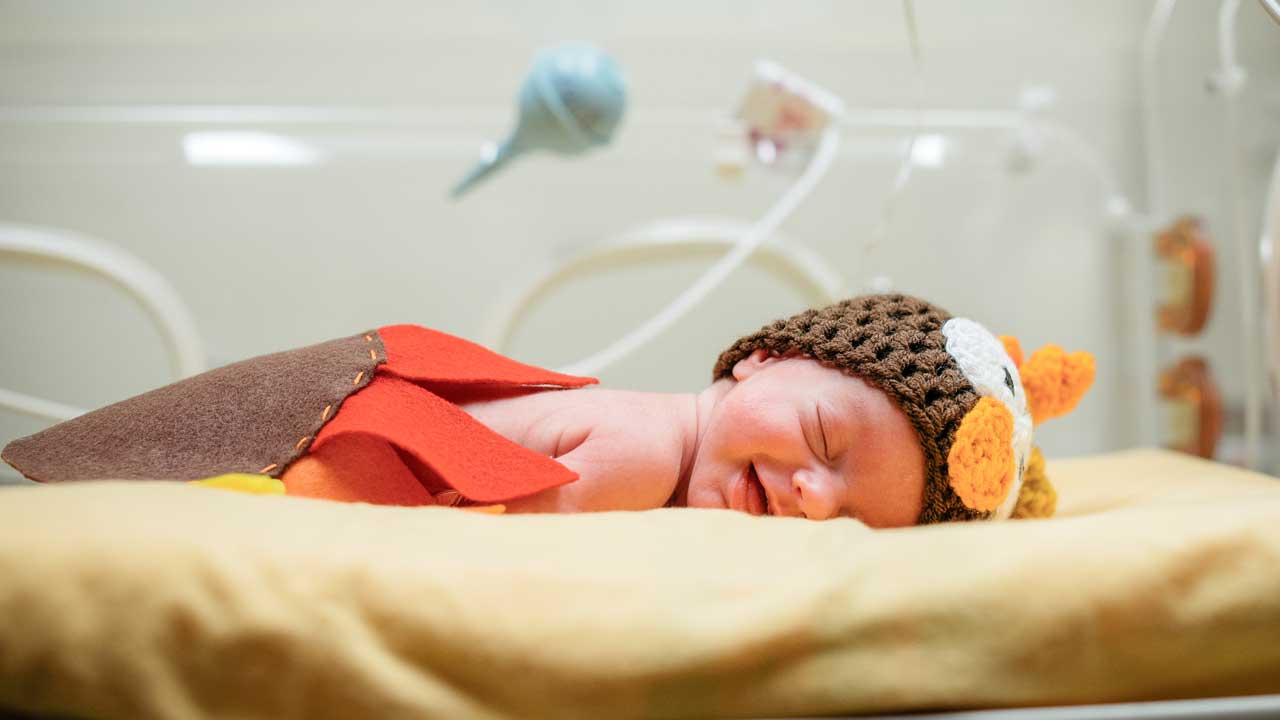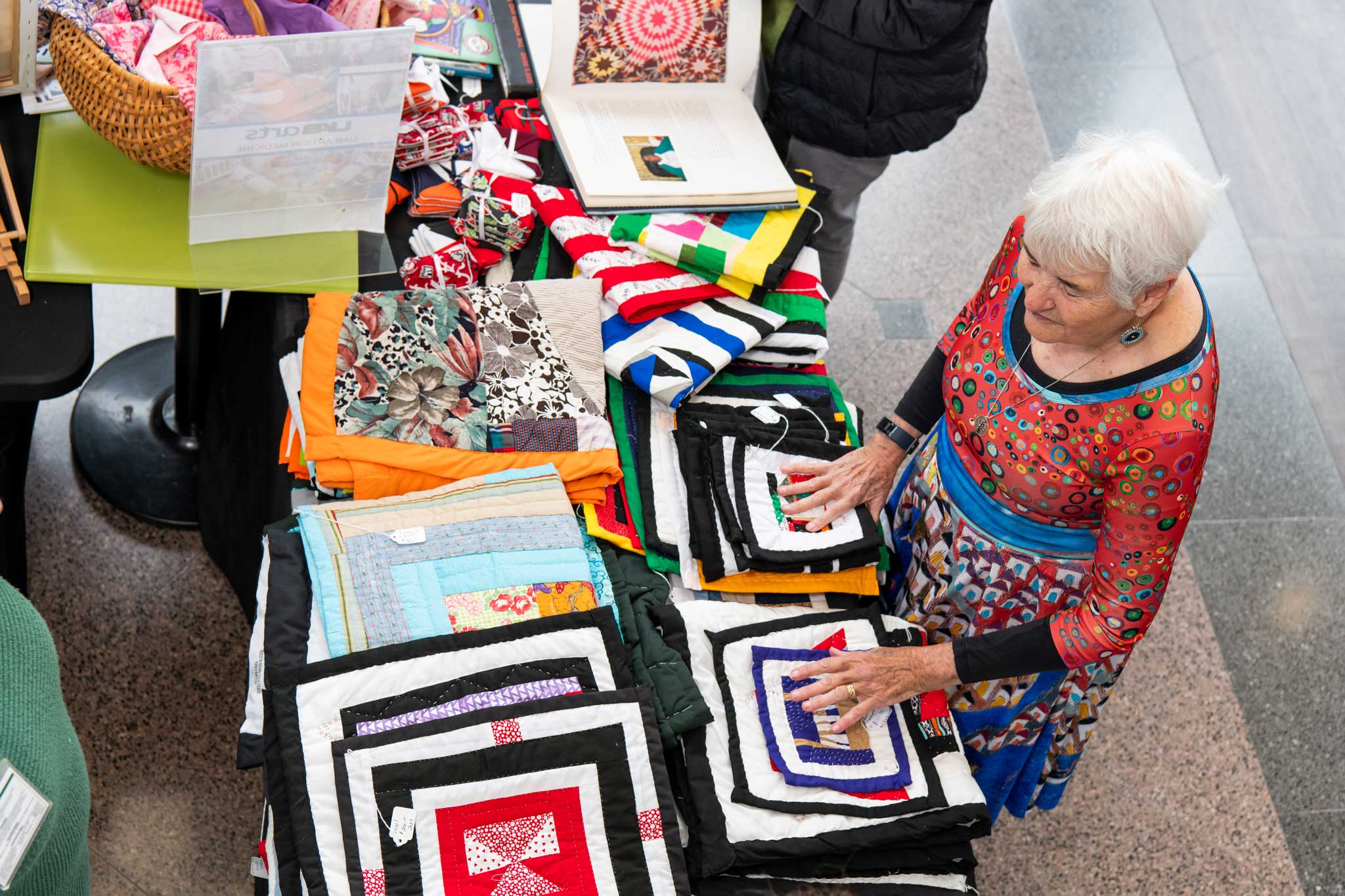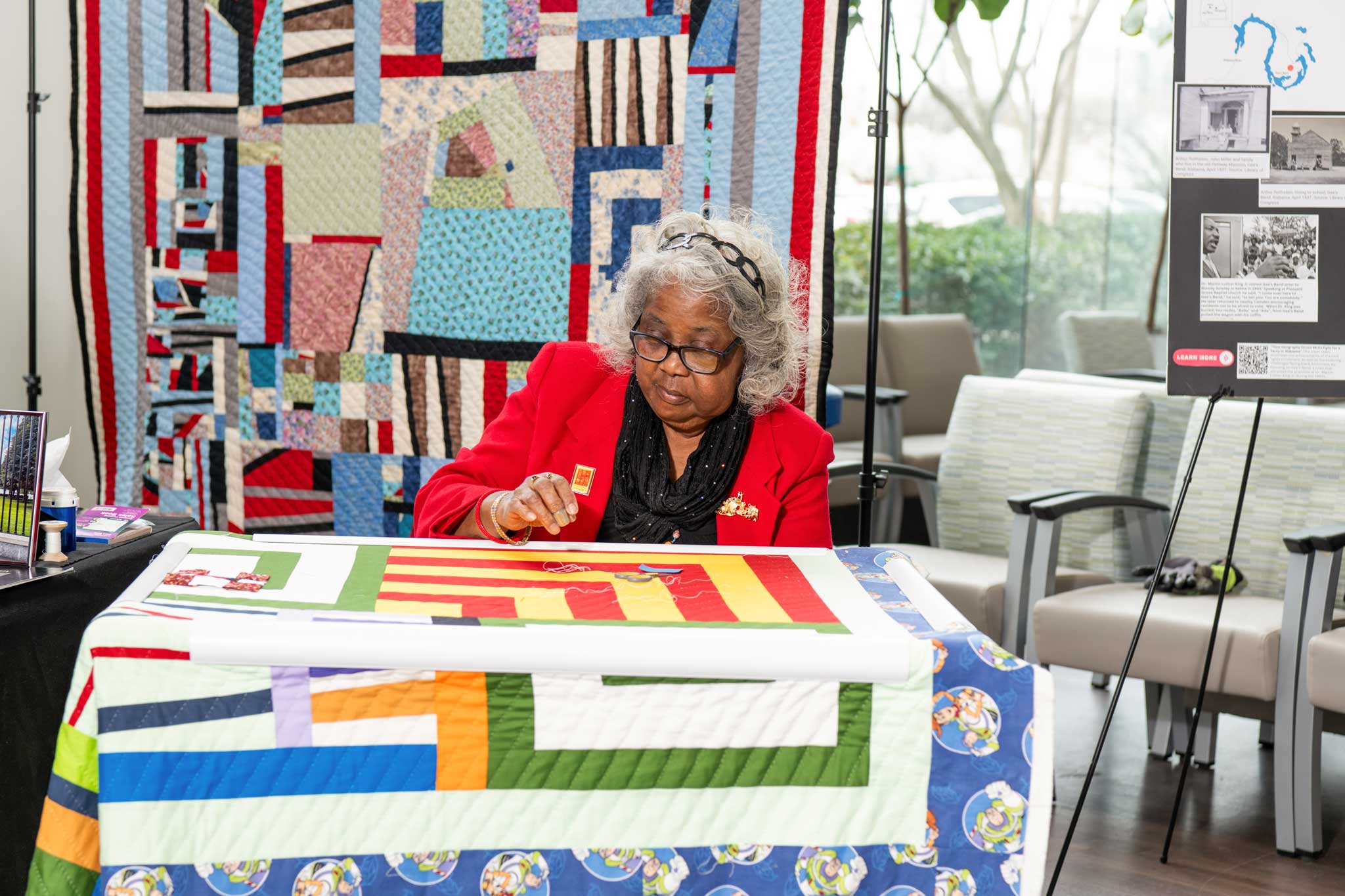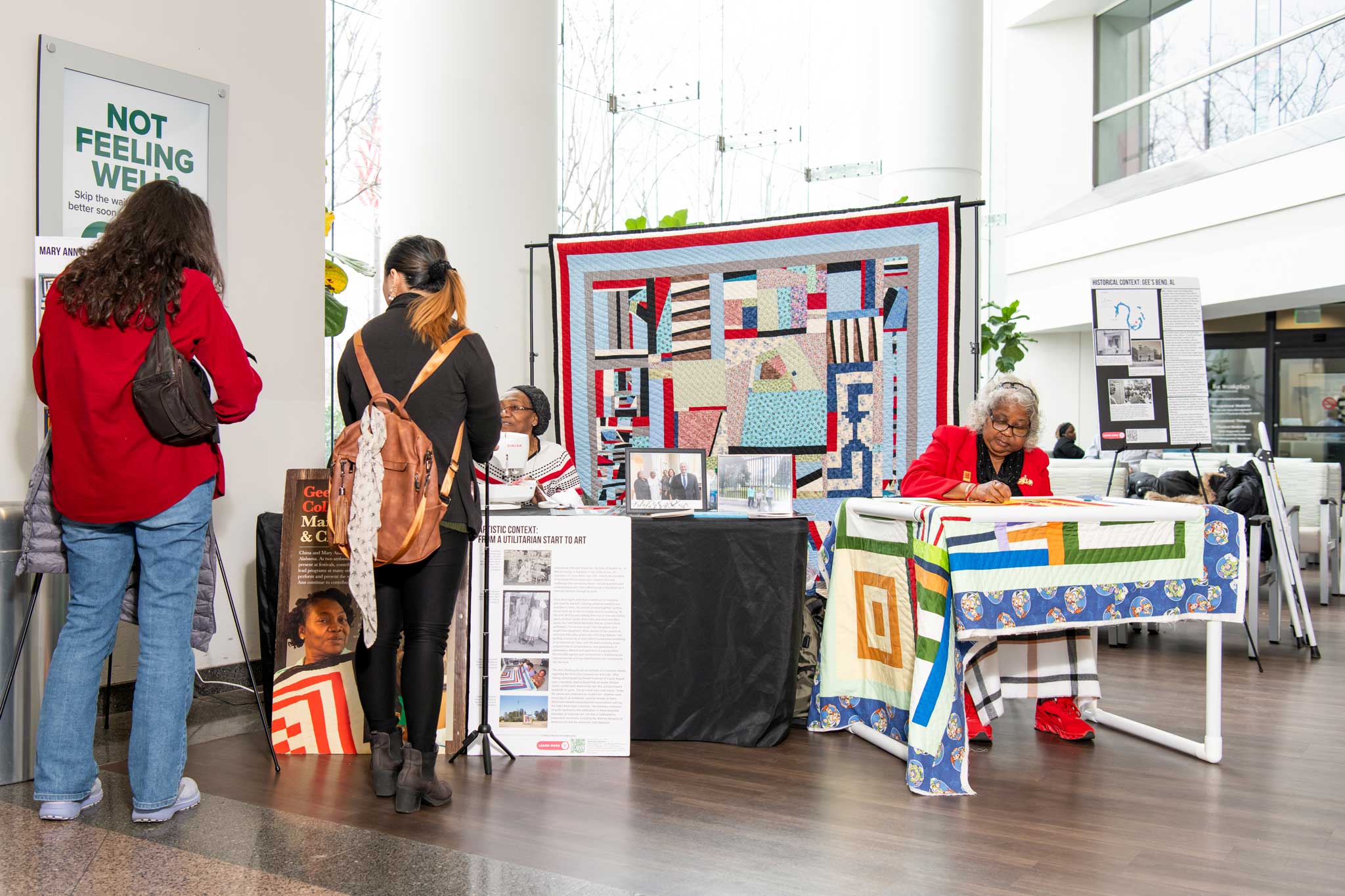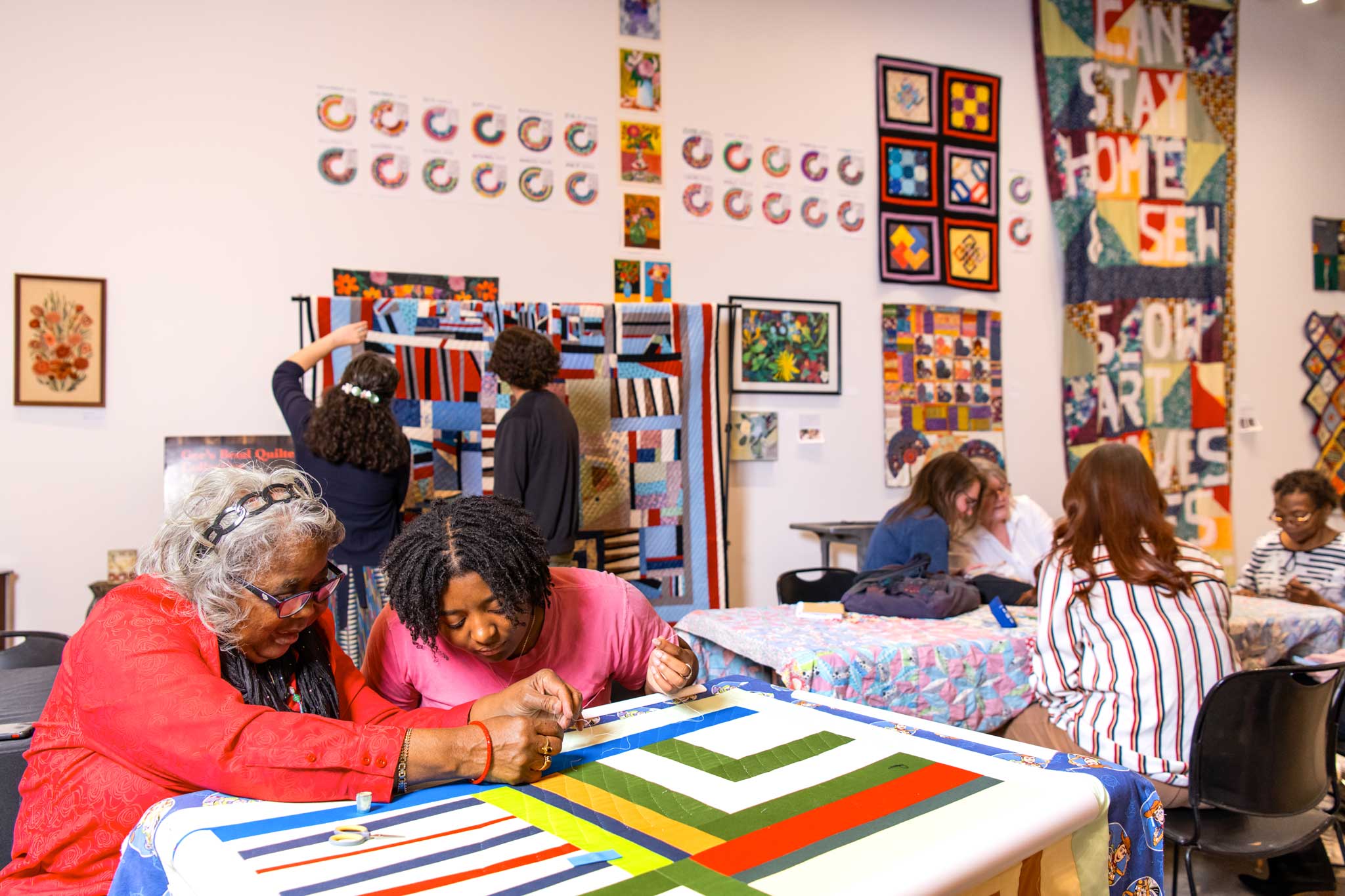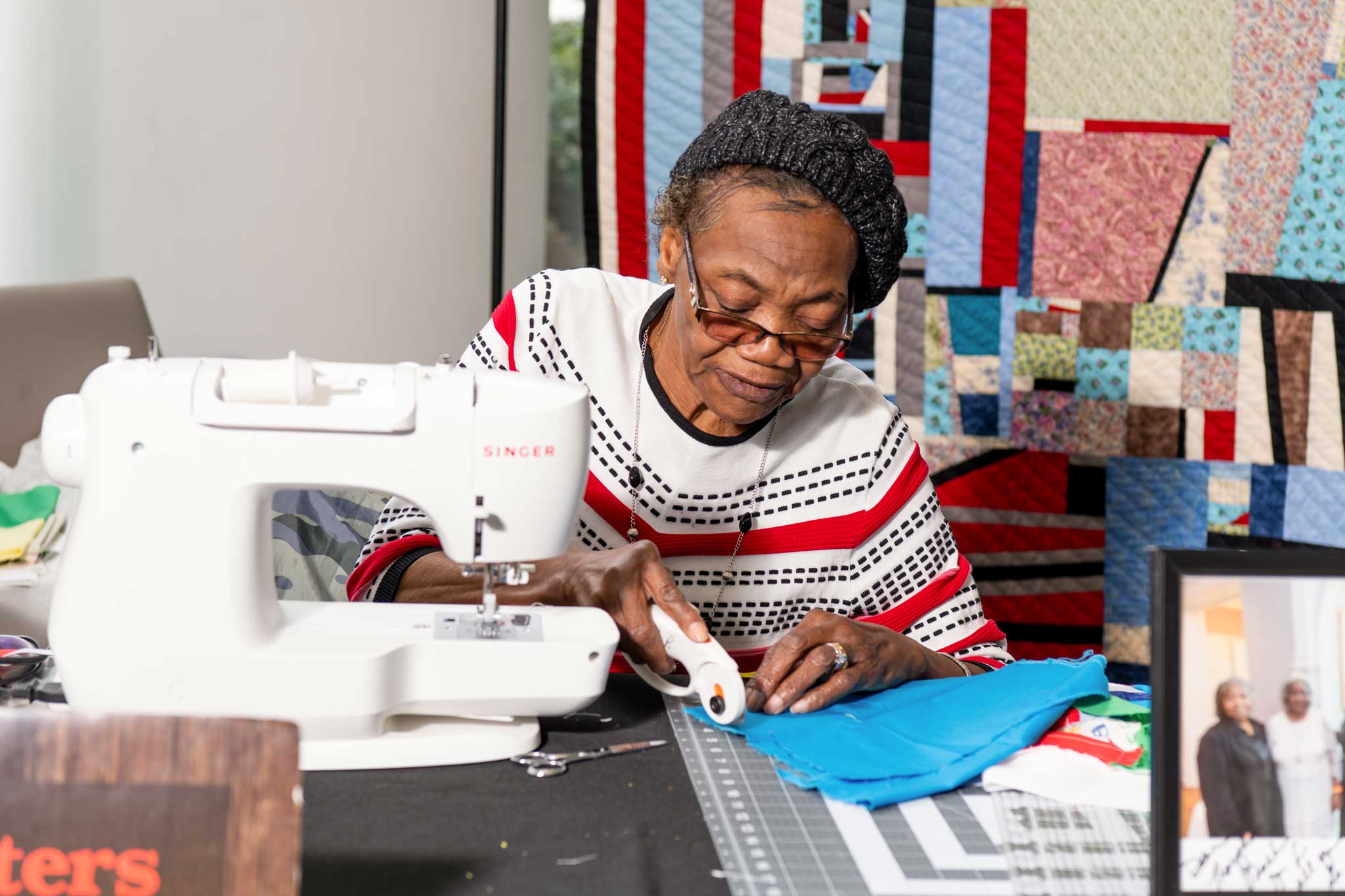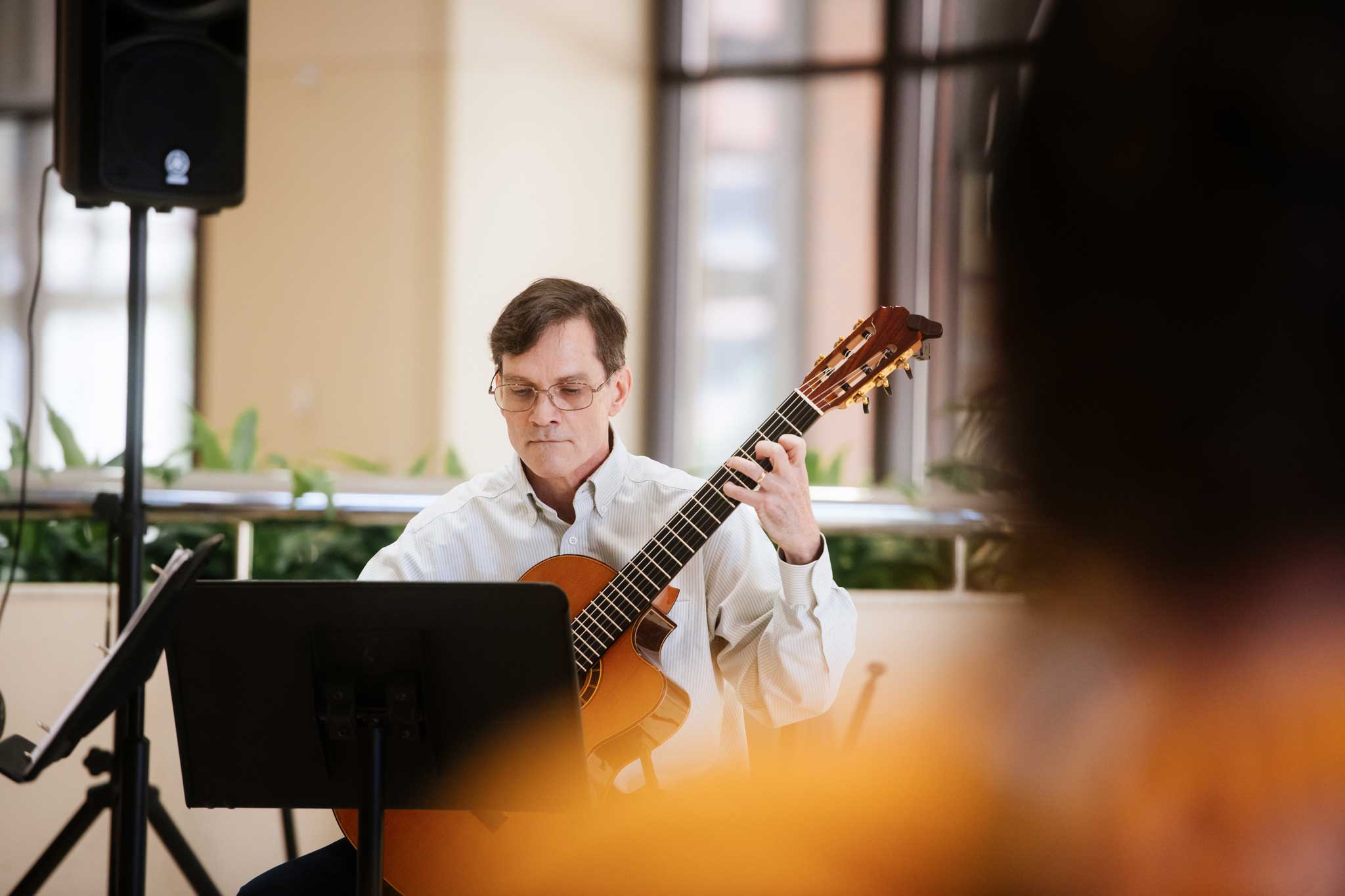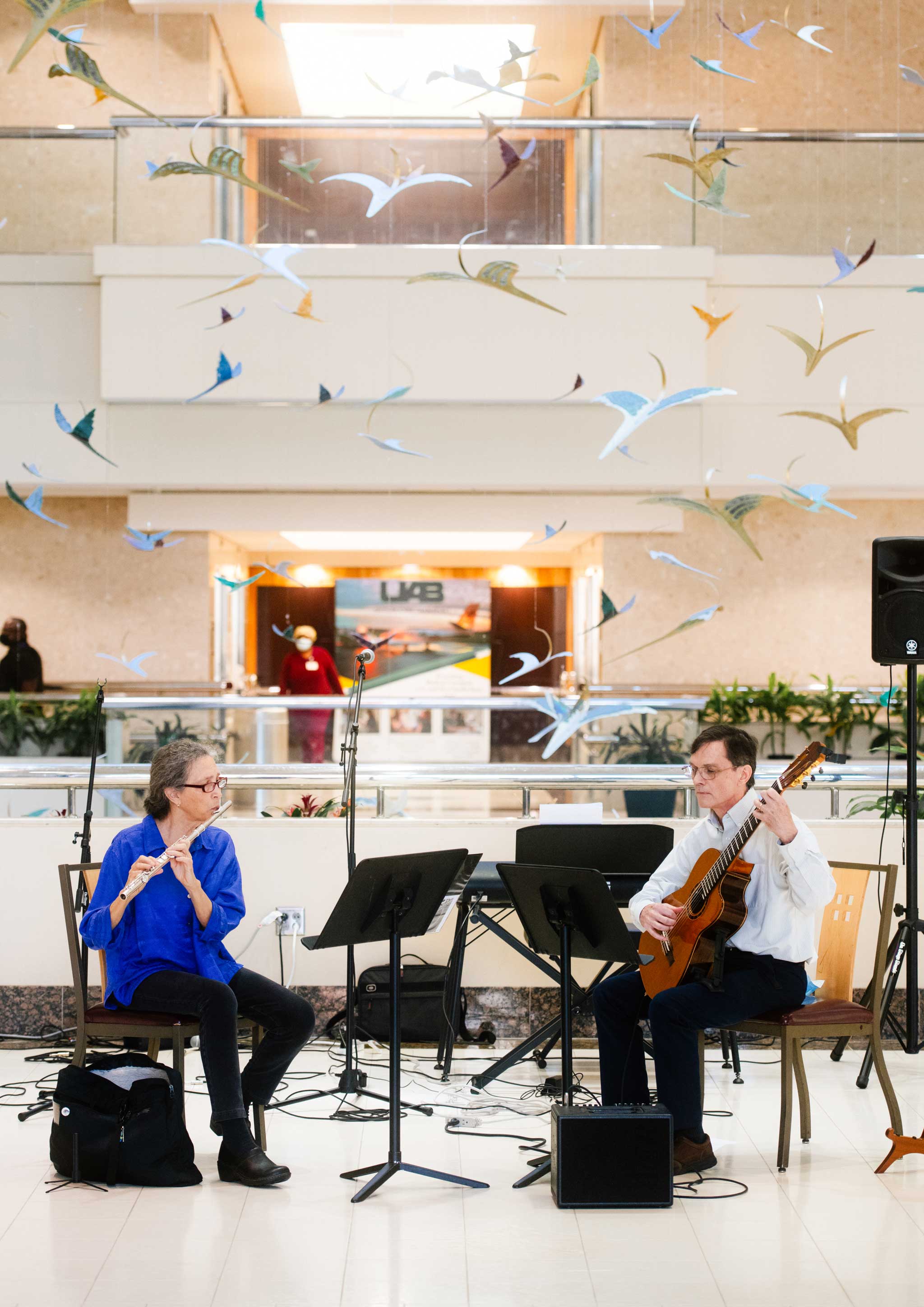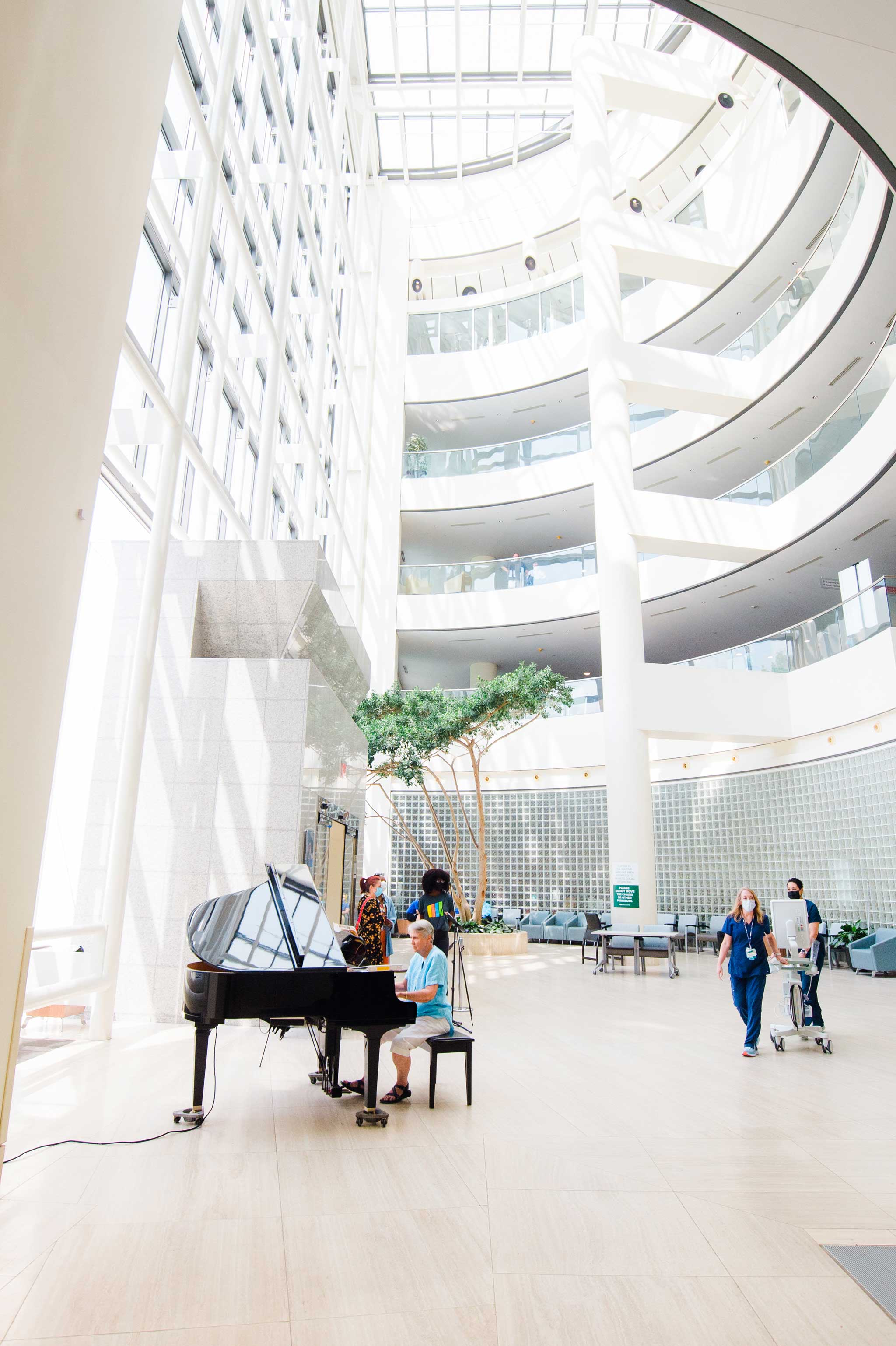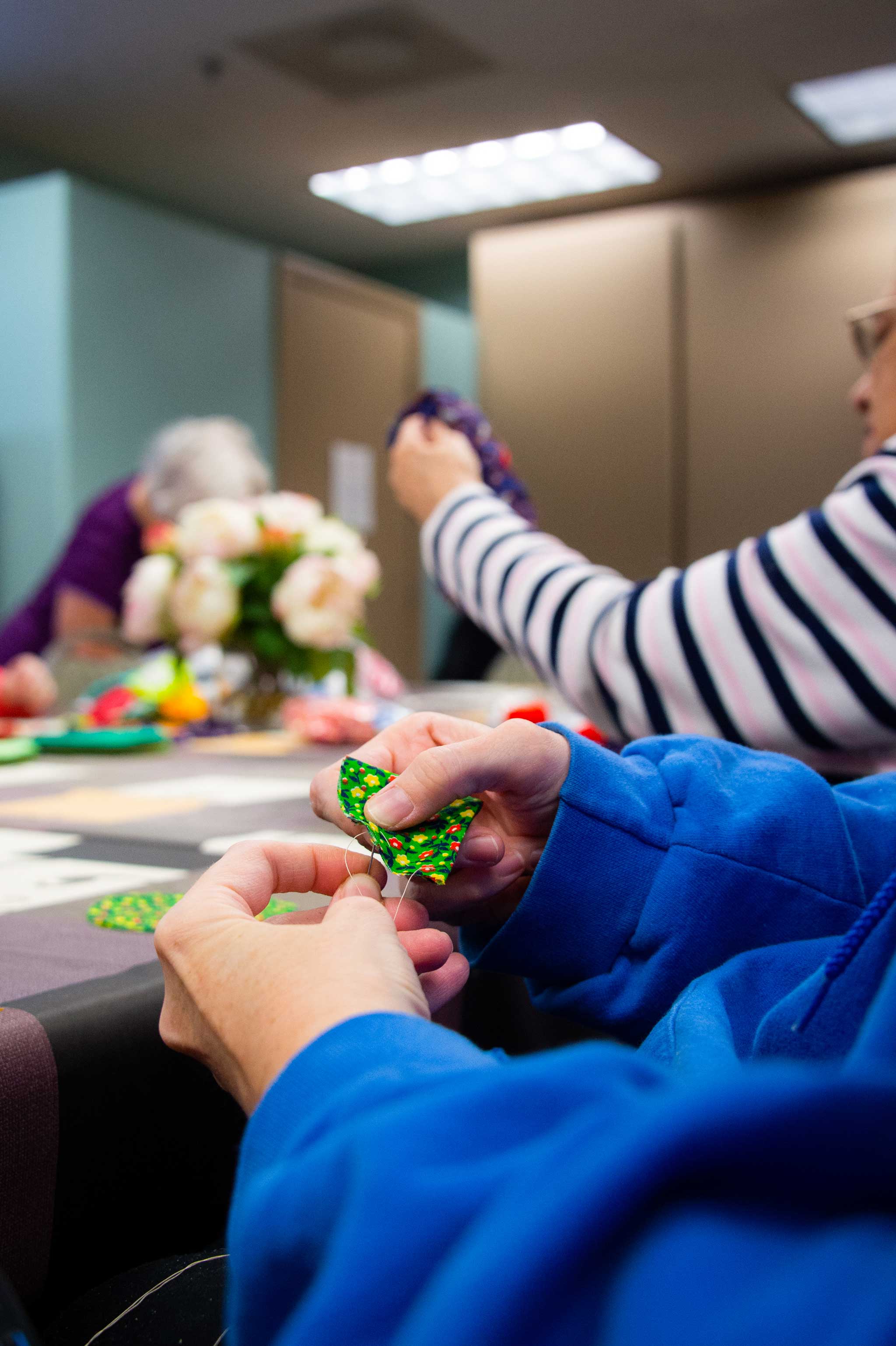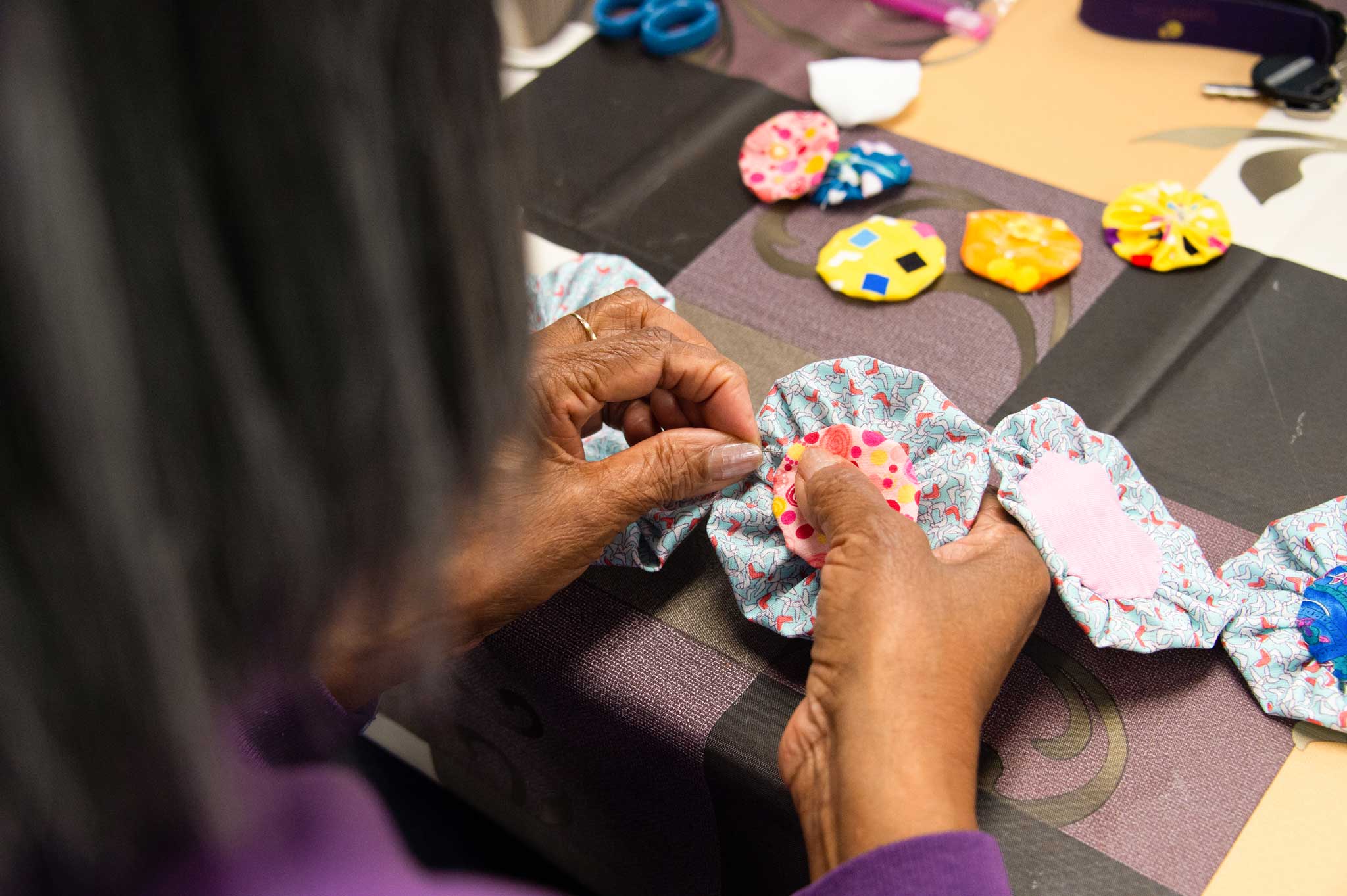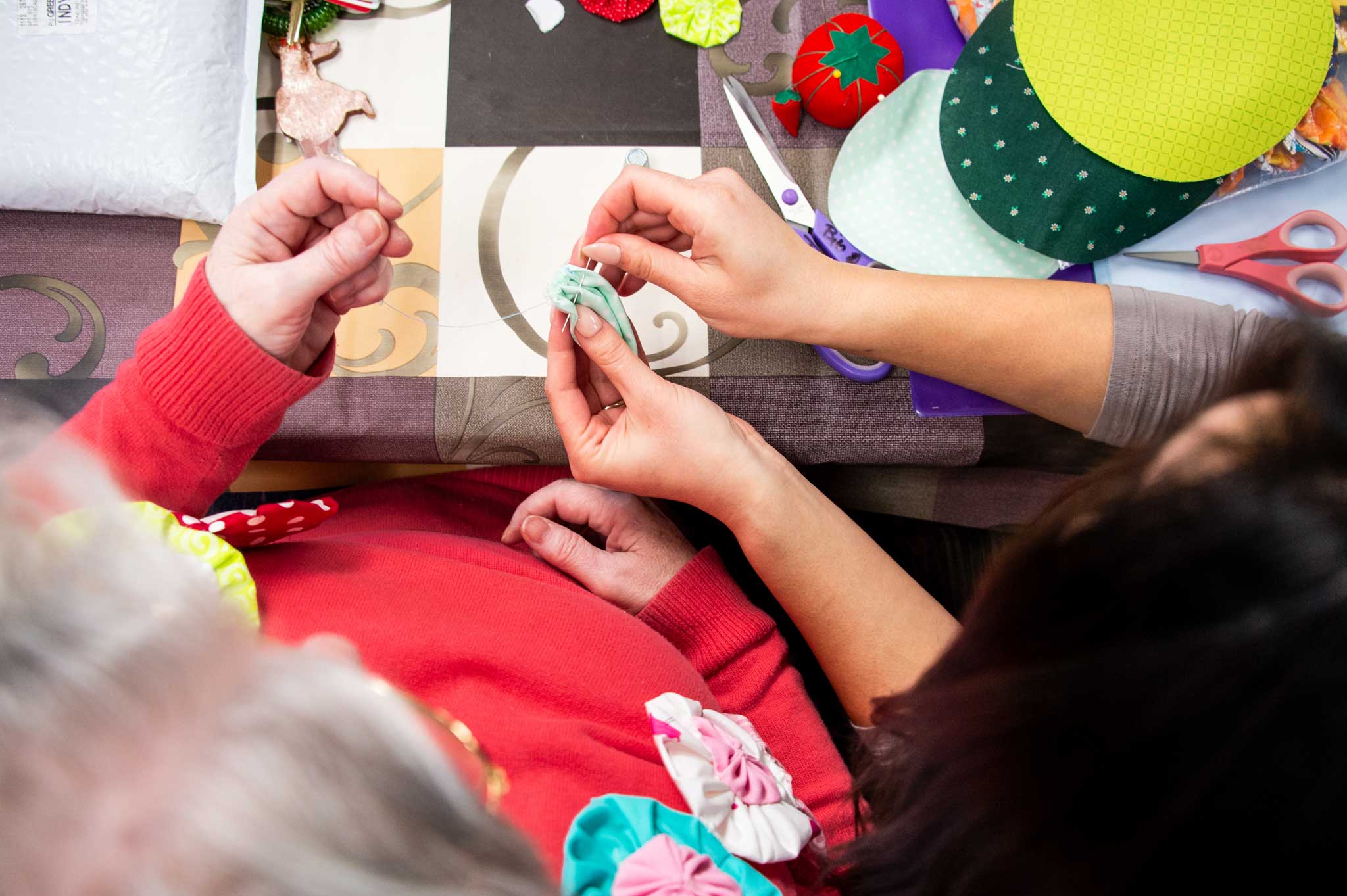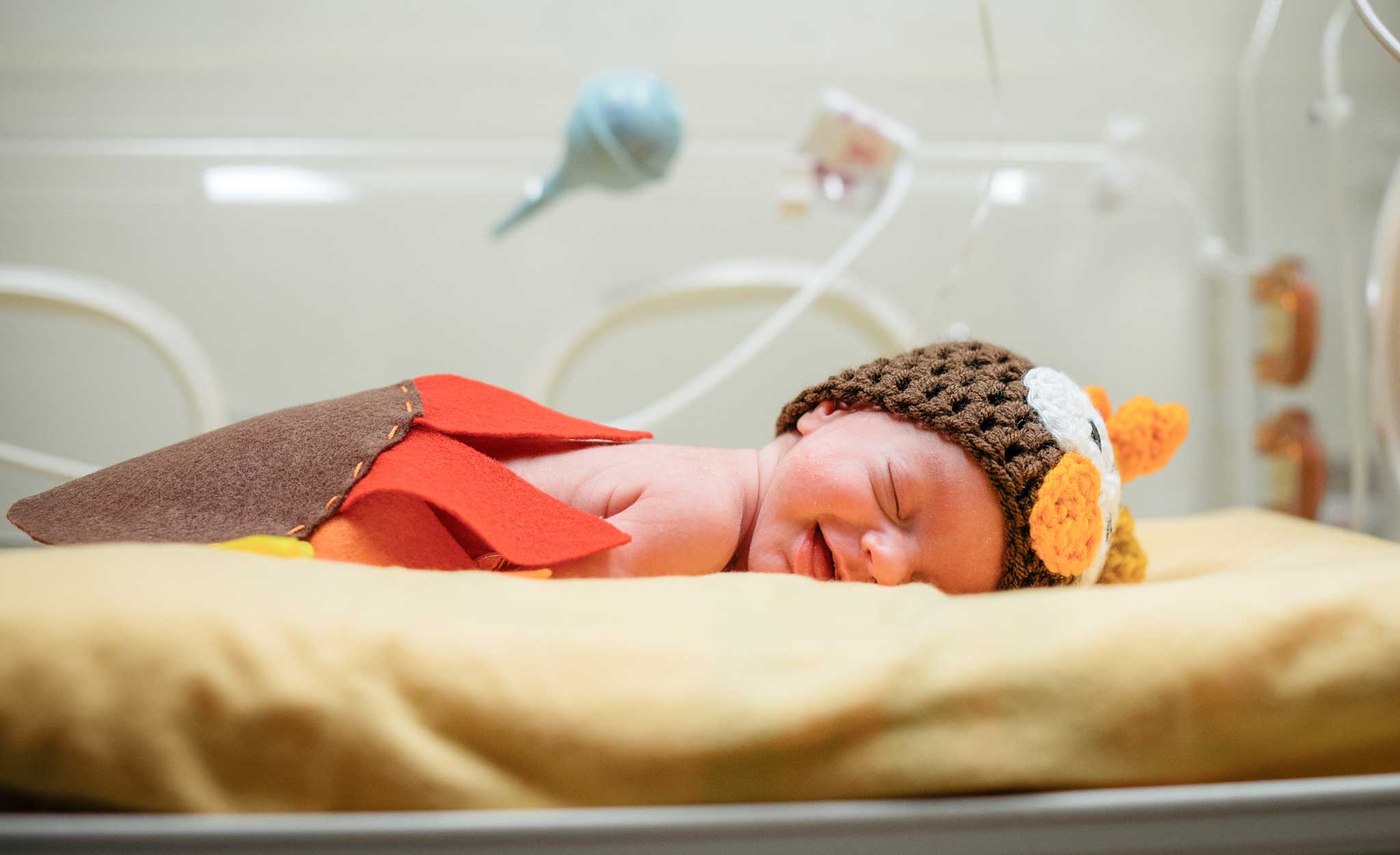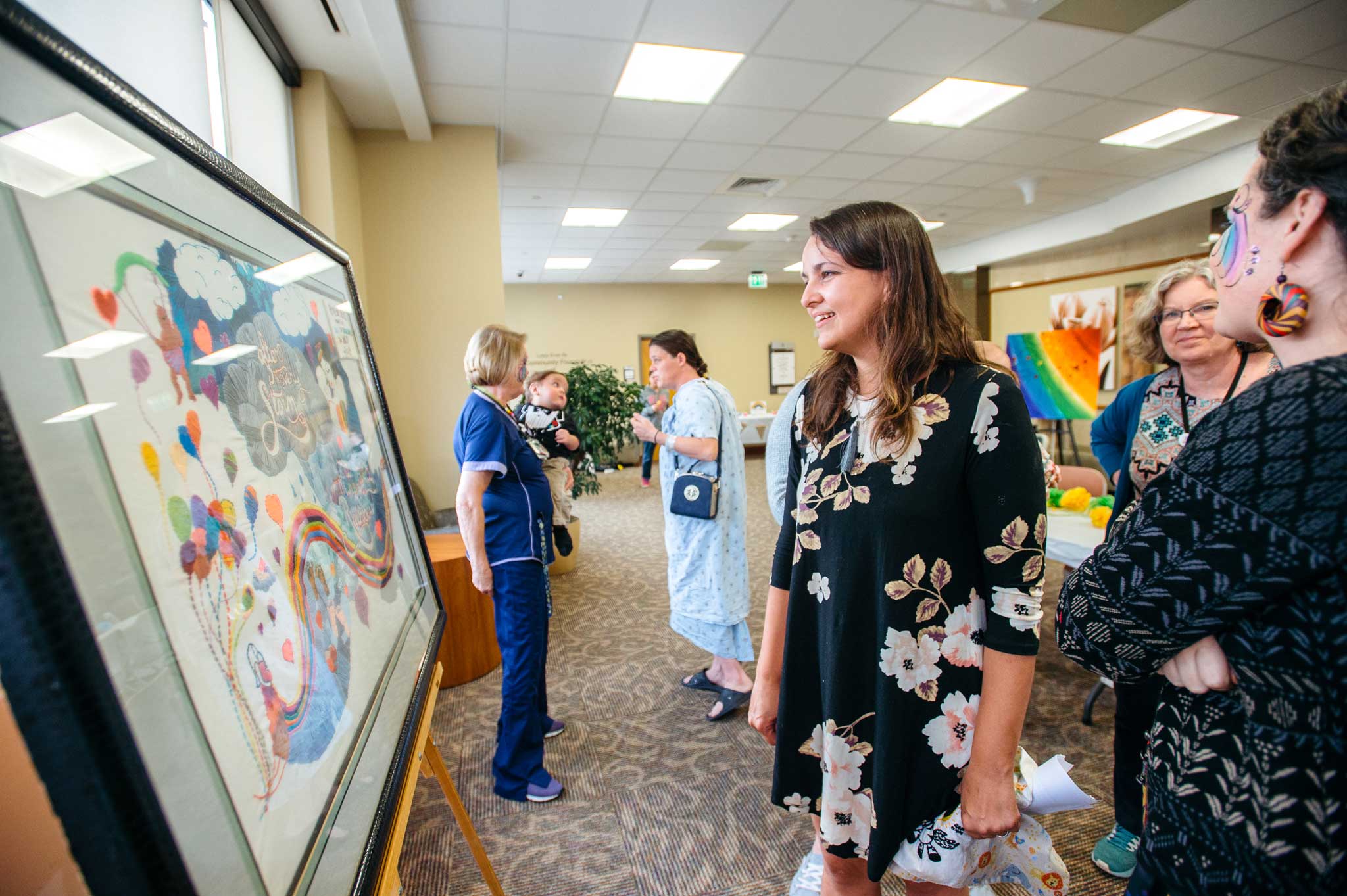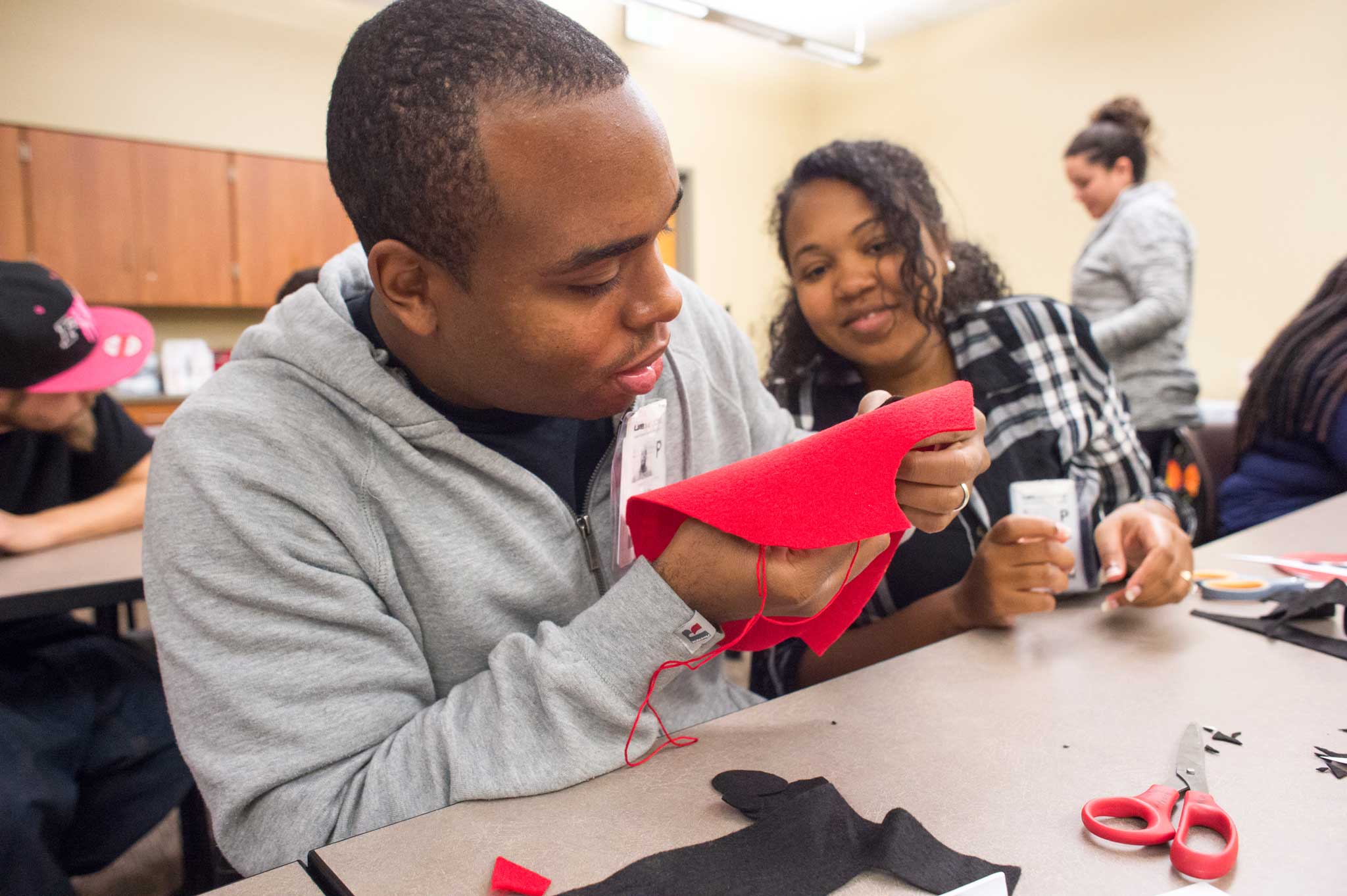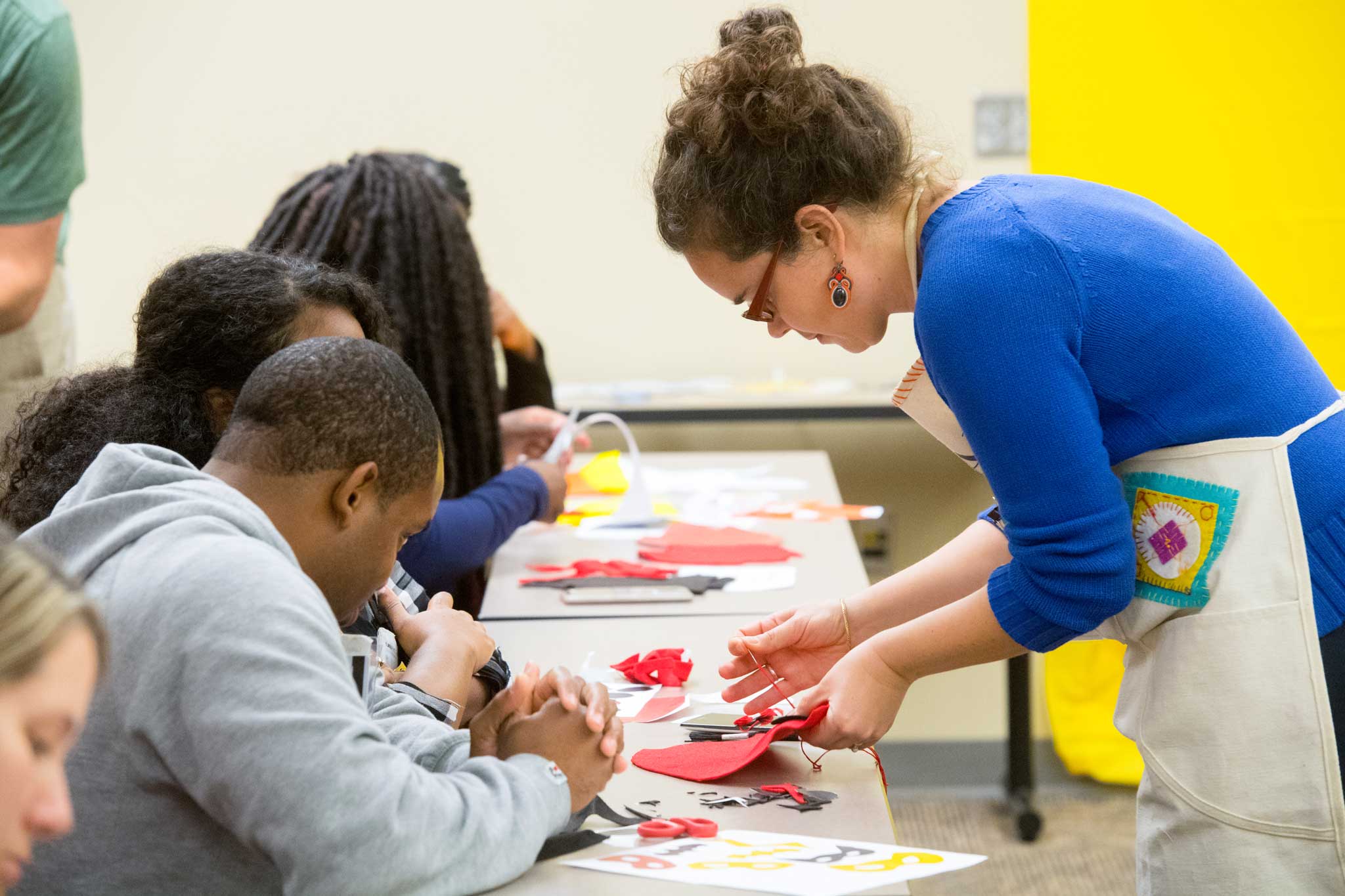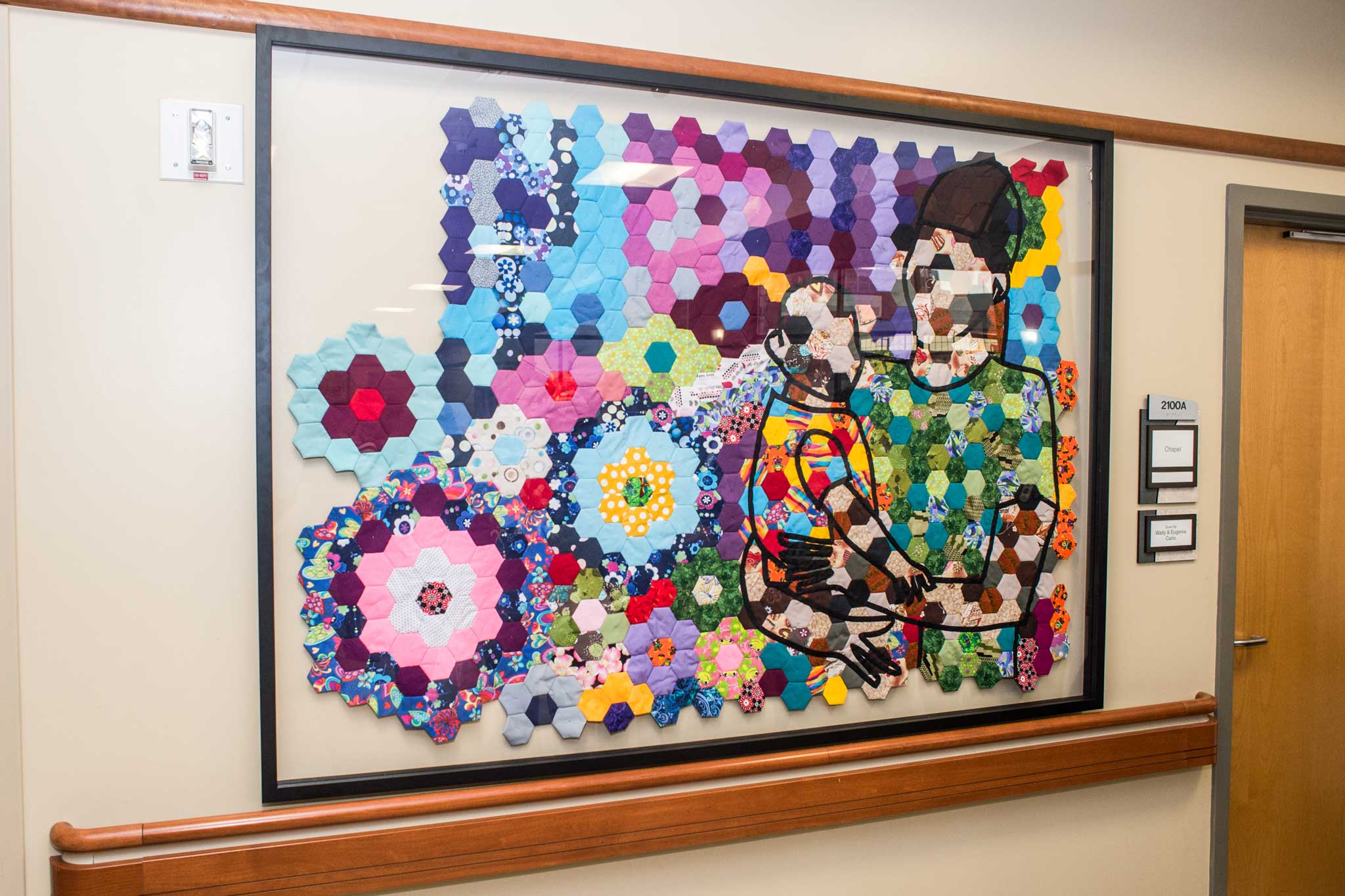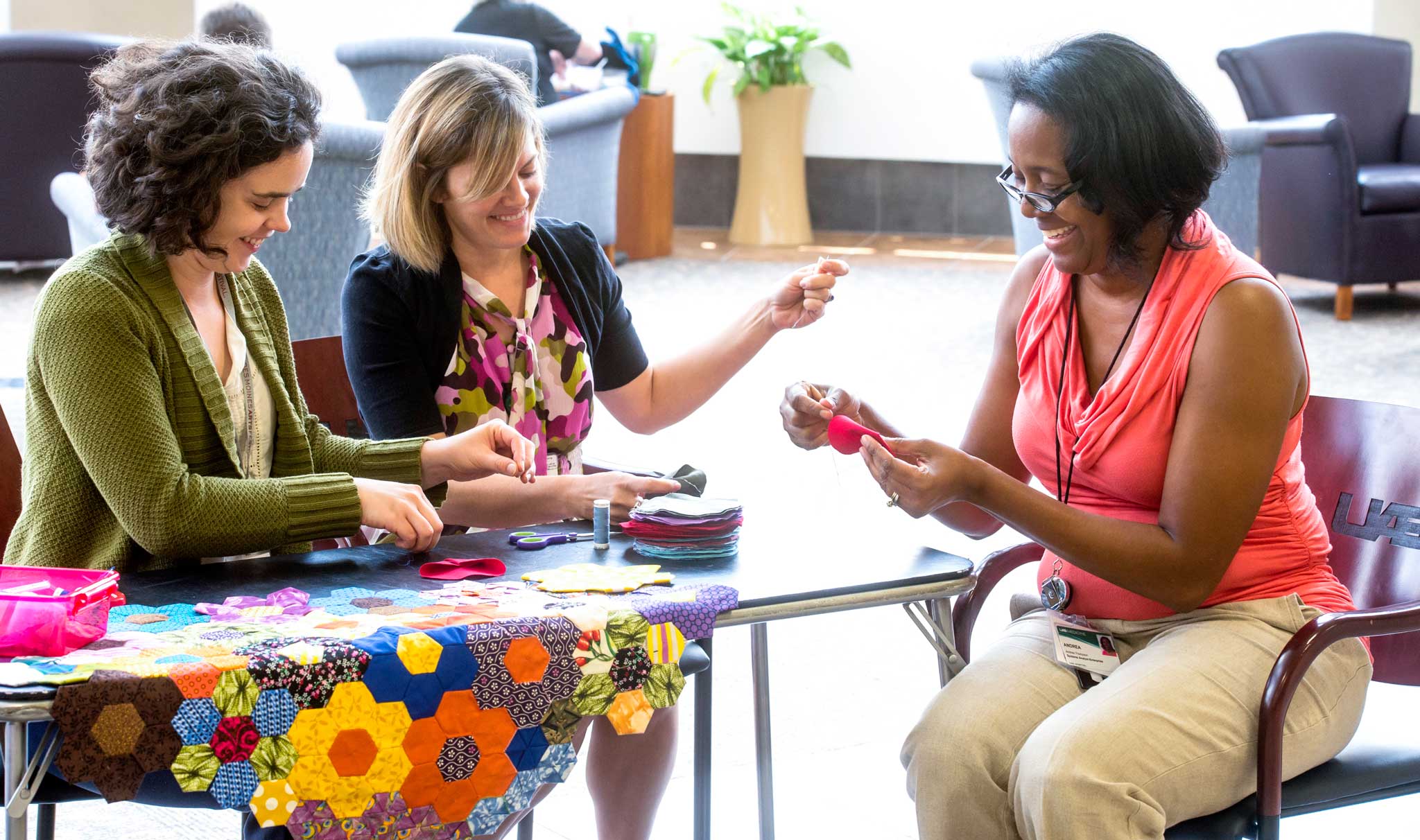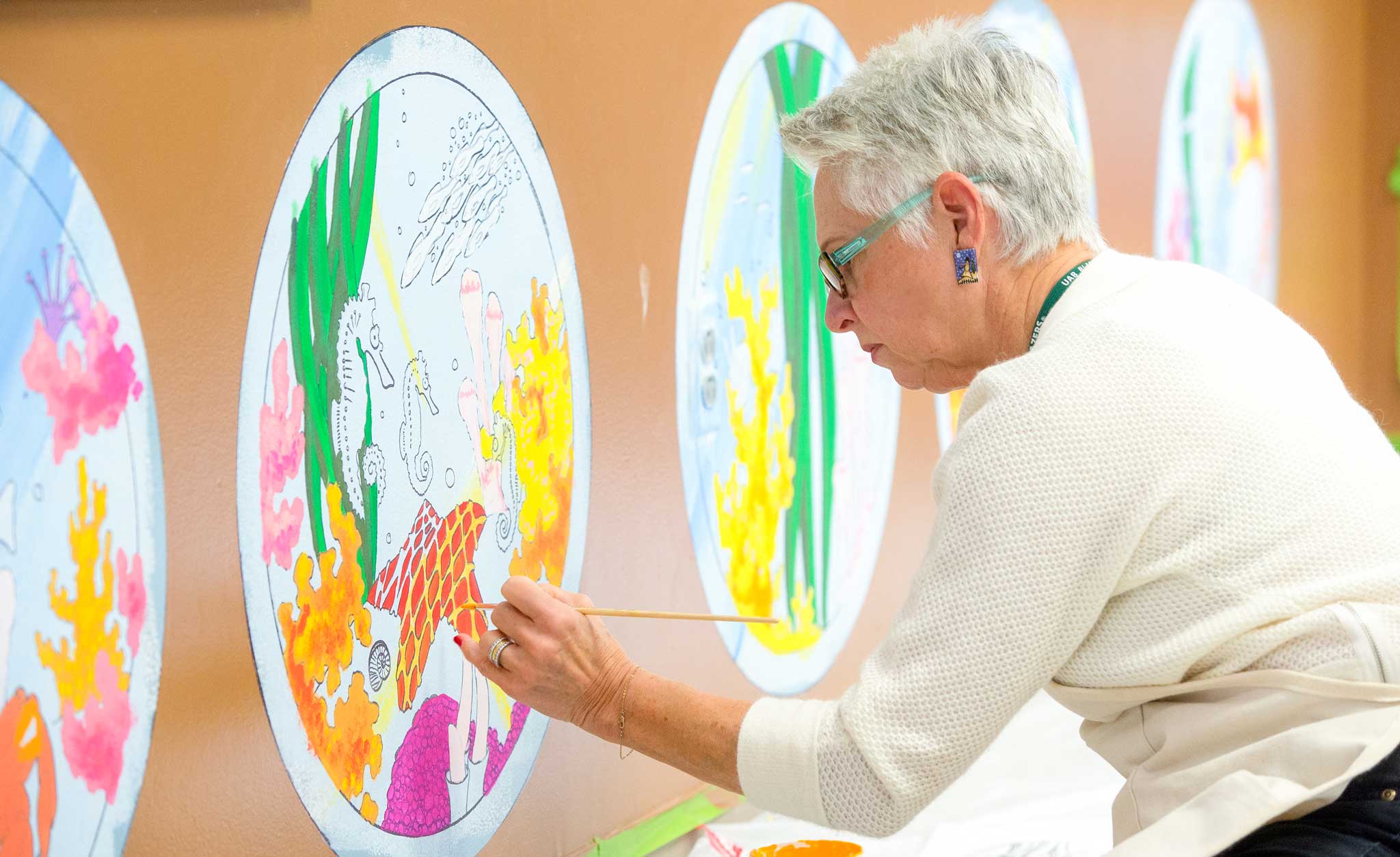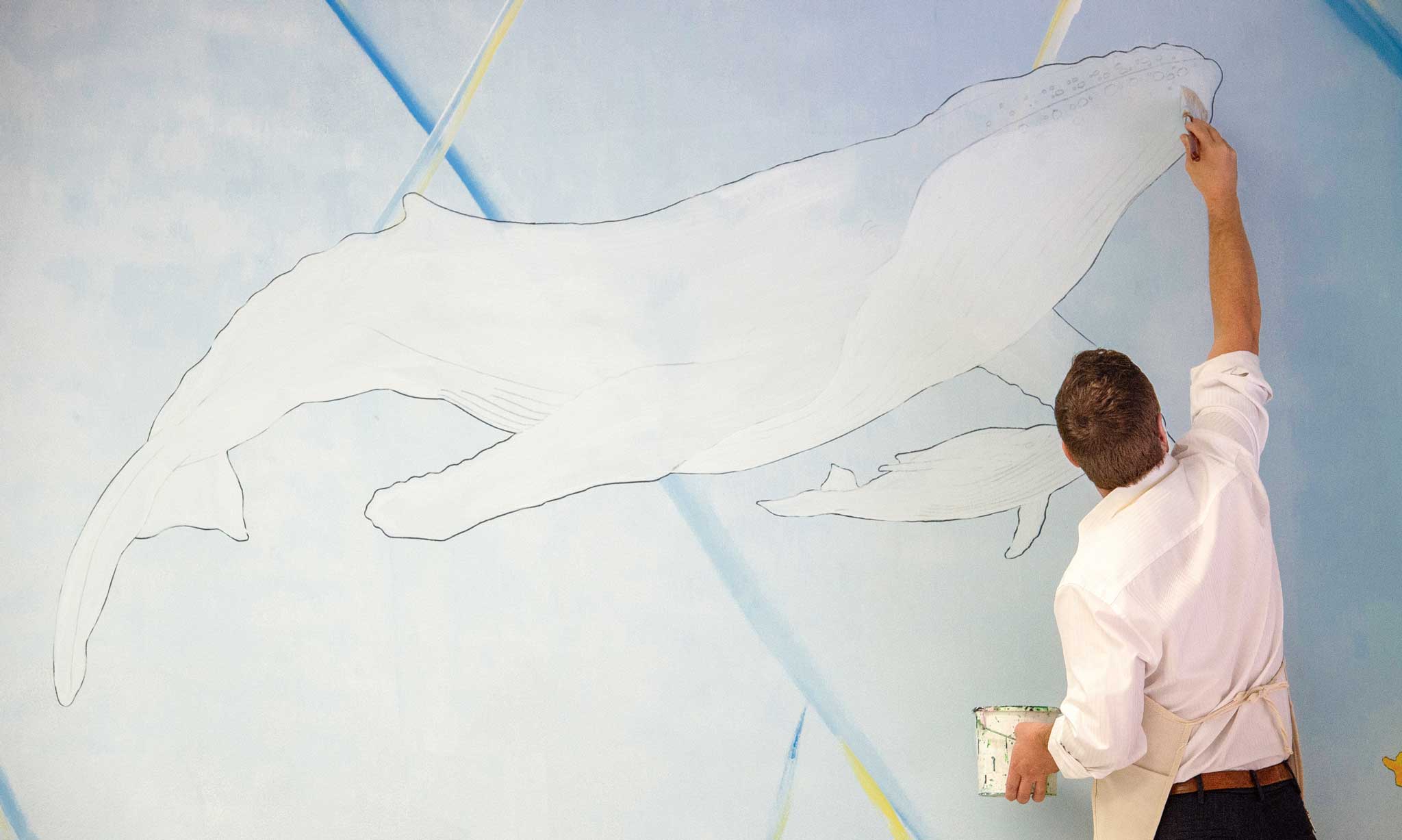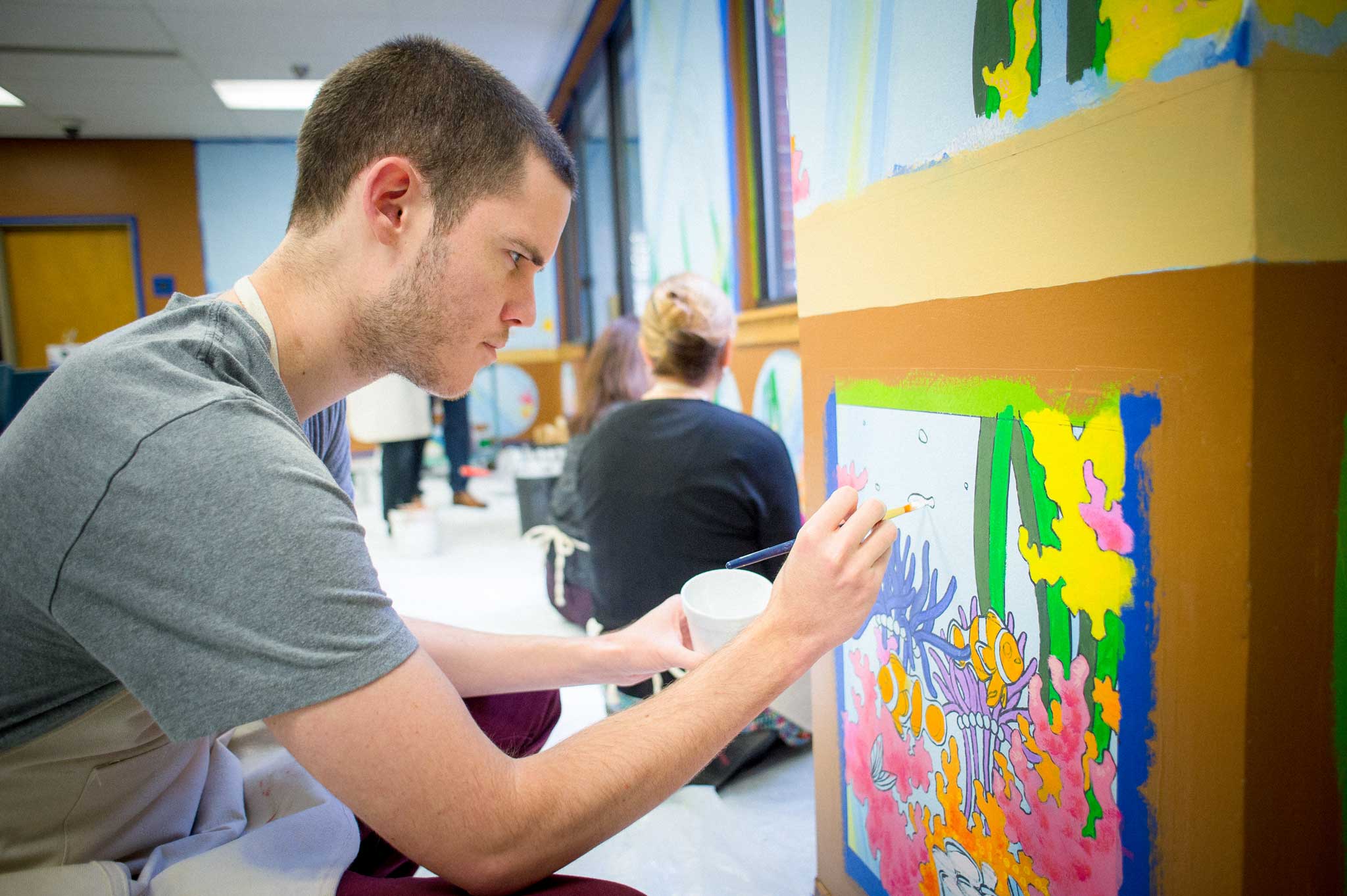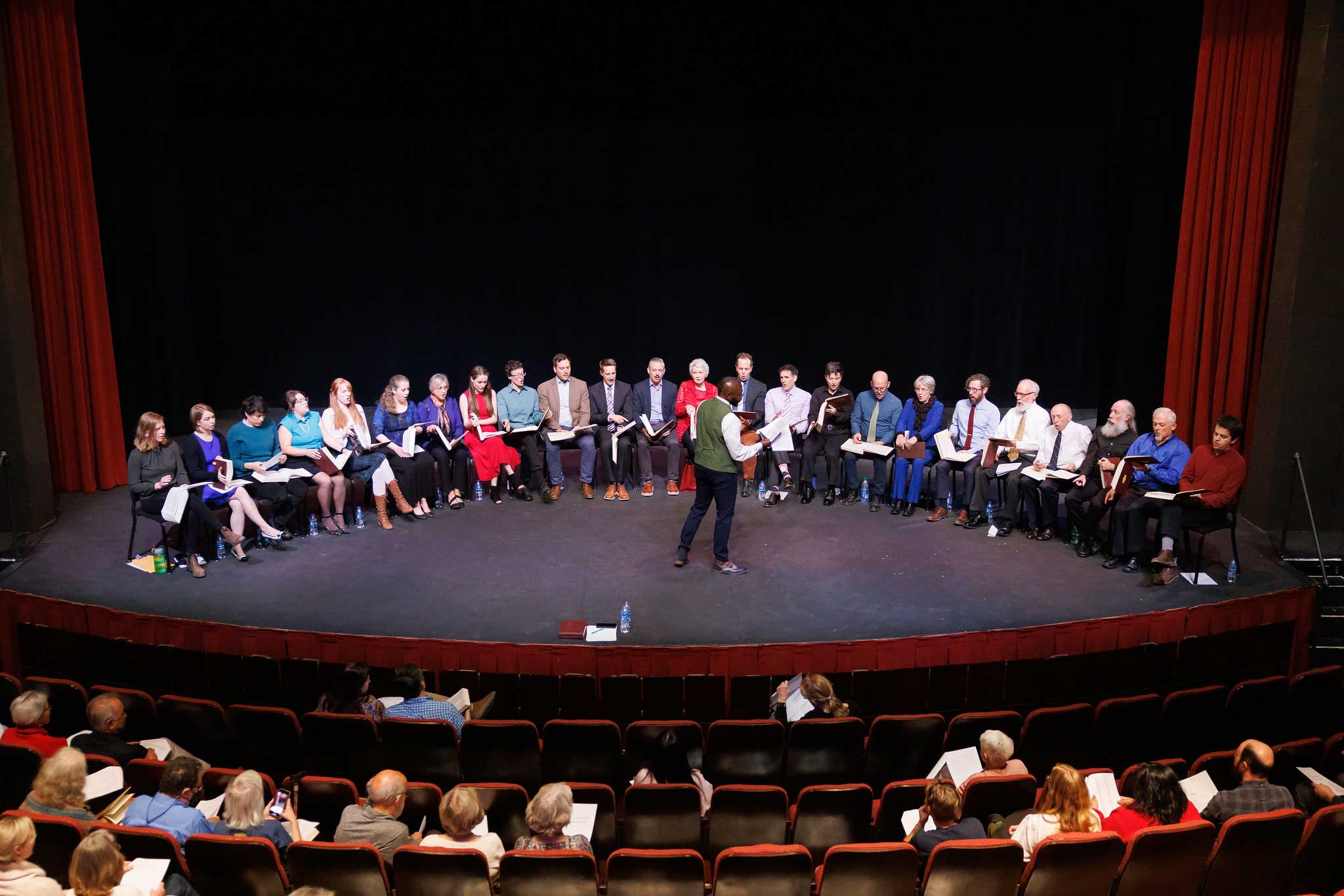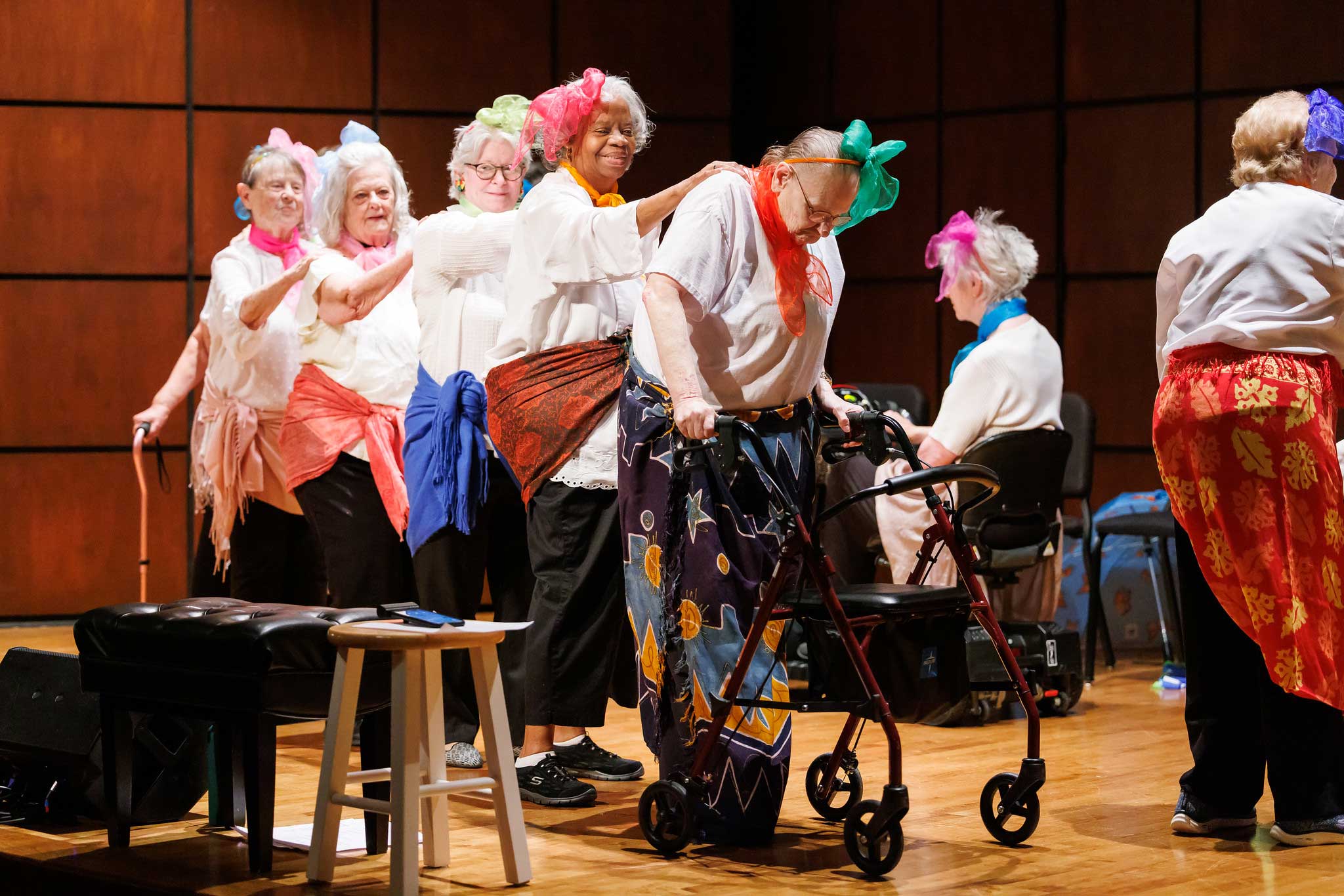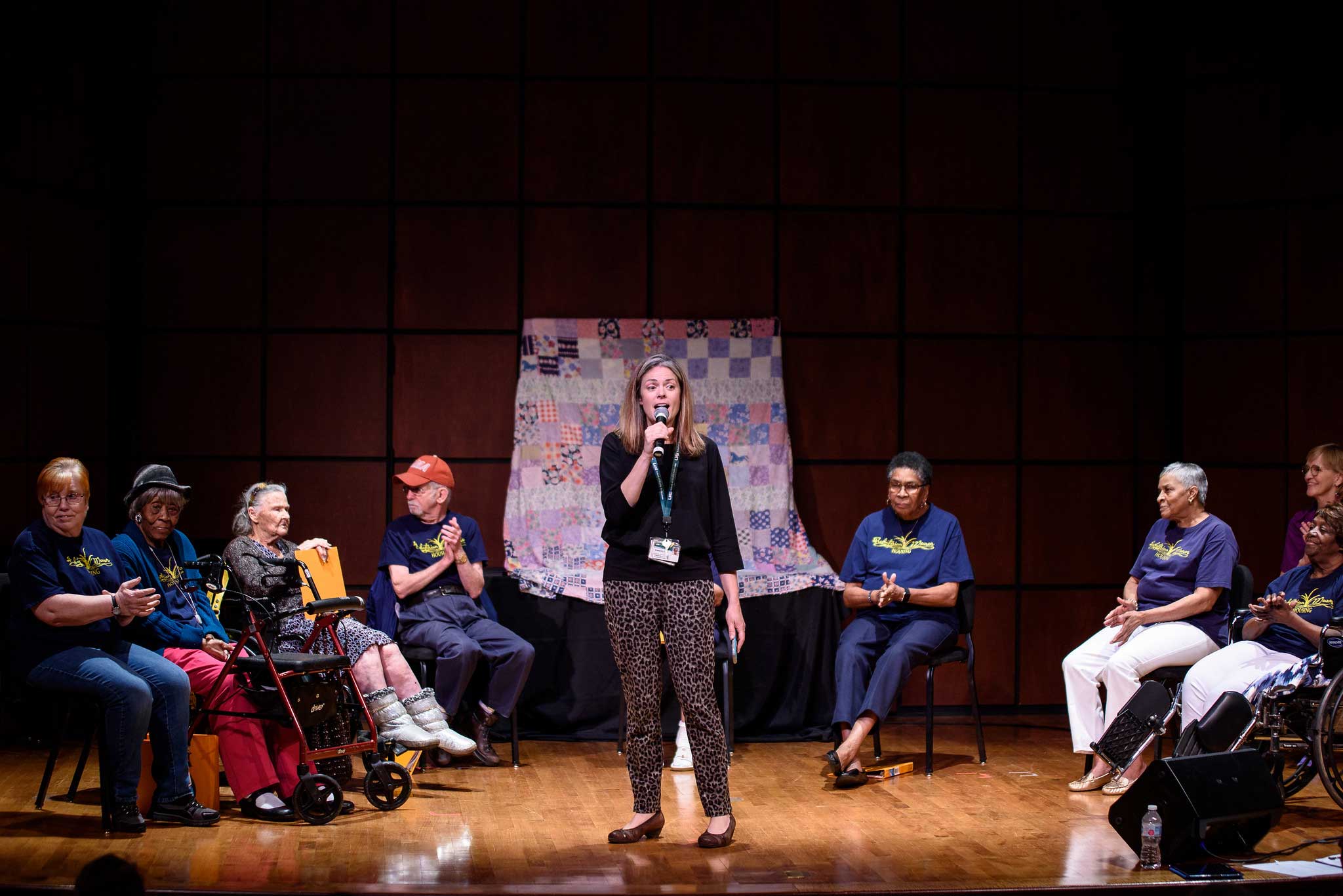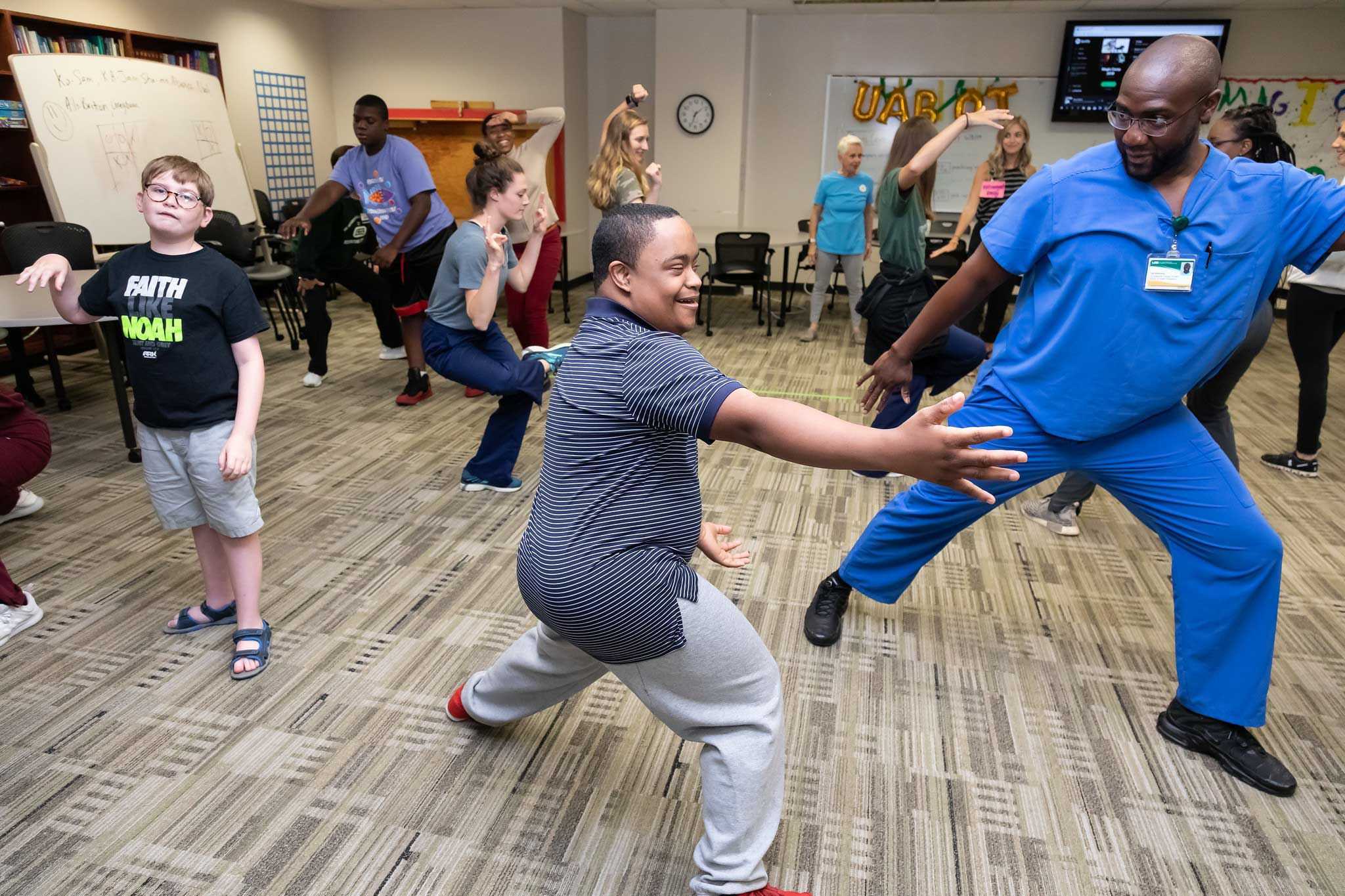It seems obvious today, but in 2013, the idea of a multi-disciplinary arts in medicine program that was designed to improve patient experiences and outcomes was pretty unusual.
Although UAB Hospital had been running a music therapy program for 15 years, in which trained health professionals worked with patients to achieve specific therapeutic goals, the AIM concept was more comprehensive, focusing on a patient’s entire healing process and embracing a holistic approach to their wellbeing.
One person who helped catalyze the idea was Jordan DeMoss, then-senior associate vice president for UAB Hospital. DeMoss had been interested in implementing an arts in medicine program at UAB, so he reached out to UAB’s Alys Stephens Center, which had cultivated a community of local artists eager to share their talents through its ArtPlay education and outreach program, including at Children’s of Alabama. His goal was to “bring to UAB Medicine the side of healing that isn’t science,” he said in 2015.
Kimberly Kirklin, then-director of ArtPlay, was interested in the same thing. After seeing how kids in the ArtPlay program were transformed by the arts experience, she started wondering what other communities could be similarly impacted, particularly hospital patients. So she helped create a pilot program to coach professional artists on navigating the clinical environment, focusing on patients facing long-term, in-patient stays, like transplant patients.
Fortunately, some of the ASC’s artists already had conducted performances and workshops in local hospitals and assisted-living centers through the ASC’s ArtCare initiative. With enthusiasm from the artistic community and with financial support and confidence in AIM’s vision—fueled by a pilot grant from UAB Medicine’s Innovation Board—the program launched in 2013, making UAB’s AIM program the first of its kind in Alabama, with Kirklin as the director of programming.
Bringing the soul back to medicine
What was becoming apparent at UAB and at a few select medical centers across the country was that the fine line separating physicians and artists began to widen only a few centuries ago, when scientific discoveries about germs led to hospitals becoming more sterile, separate environments. As leading hospitals began to shift to a “whole person” approach to treatment, “it’s become very clear that the arts do have a place,” Kirklin said. “It brings the soul back to medicine.”
In AIM’s early days, the focus was on storytelling, music, dance, painting, performance, and textile art. Elizabeth Vander Kamp, Lillis Taylor, and David Roby were among the six initial artists in the AIM program, and their impact was felt immediately in the clinical space.
Terri Middlebrooks, clinical care coordinator for the nationally renowned Acute Care for Elders unit, said soon after working with AIM that the program “is one of the greatest things to happen to our unit.” ACE provides care for patients ages 65 and older with a focus on mobility and cognitive stimulation, many of whom have dementia and stay on the unit for extended periods. For these patients, AIM was a perfect fit.
“Our patients need people to talk with them; they want to tell their stories,” Middlebrooks shared in 2015. AIM actor and playwright David Roby helped patients write mini-memoirs to preserve those precious words for their families. And by getting to know each patient, Roby, Vander Kamp and the other artists provided clinical staff with valuable observations and insights that can enhance care.
It was a strong start, but there was much more to come.
Threads of healing
Today, the AIM program has expanded to eight Artists in residence, four creative arts therapists, and one yoga therapist and provides 115 hours of services per week to a large, and growing, number of clinical units at UAB Hospital, Children’s of Alabama, at Aging Creatively facilities, and at other community partners including St. Vincent’s East and the Birmingham VA Whole Health Initiative.
Now reaching those receiving in-patient treatment and their family members of all ages and abilities, AIM can connect individuals with artists-in-residence for specific activities or deliver art supplies if preferred. Bedside or group workshop activities include storytelling, painting, hand-sewing and embroidery, relaxation and meditation, movement and dance, and expressive writing and poetry. AIM artists can also personalize projects for patients based on their skills, interests, and abilities.
And AIM also brings in visiting artists for temporary residencies, infusing new approaches, creativity, and talent into the AIM team and the larger community served by the program. Most recently, Kirklin and her team invited a few members of the renowned Quilters of Gee’s Bend to teach workshops, develop special projects for UAB, and sew in the common areas of the UAB Women’s and Infants Center, Kirklin Clinic, and UAB Hospital-Highlands. One of their iconic quilts will be added to the hospital’s permanent art collection and hang in a main area for patients, visitors, and health care staff to enjoy.
Funded by the UAB Hospital auxiliary and supported by the Arts in Medicine Kirklin Family Endowment, the quilters’ residency was a tremendous success, bringing hundreds of patients, families, UAB community members and Birmingham residents together to watch the Gee’s Bend women work and sing. And like UAB itself, their patchwork designs—in all their colors and shapes—combined to form something beautiful and meaningful.
In recent years AIM has expanded into developing research partnerships across campus, including working with Hon K. Yuen, Ph.D., professor and director of research in the Department of Occupational Therapy in the School of Health professions. AIM has also recently collaborated on a project with the UAB Bone Marrow Transplant Program and Division of Maternal-Fetal Medicine to determine the impact of arts-based interactions on patient satisfaction.
Jordan DeMoss, now executive vice president, was prescient 10 years ago when he said, “We know that AIM is the right thing to do for our patients. The arts have thrived for thousands of years, which is proof enough that they are beneficial and therapeutic.”
At their 10-year anniversary, AIM has proven that continues to be the case.
